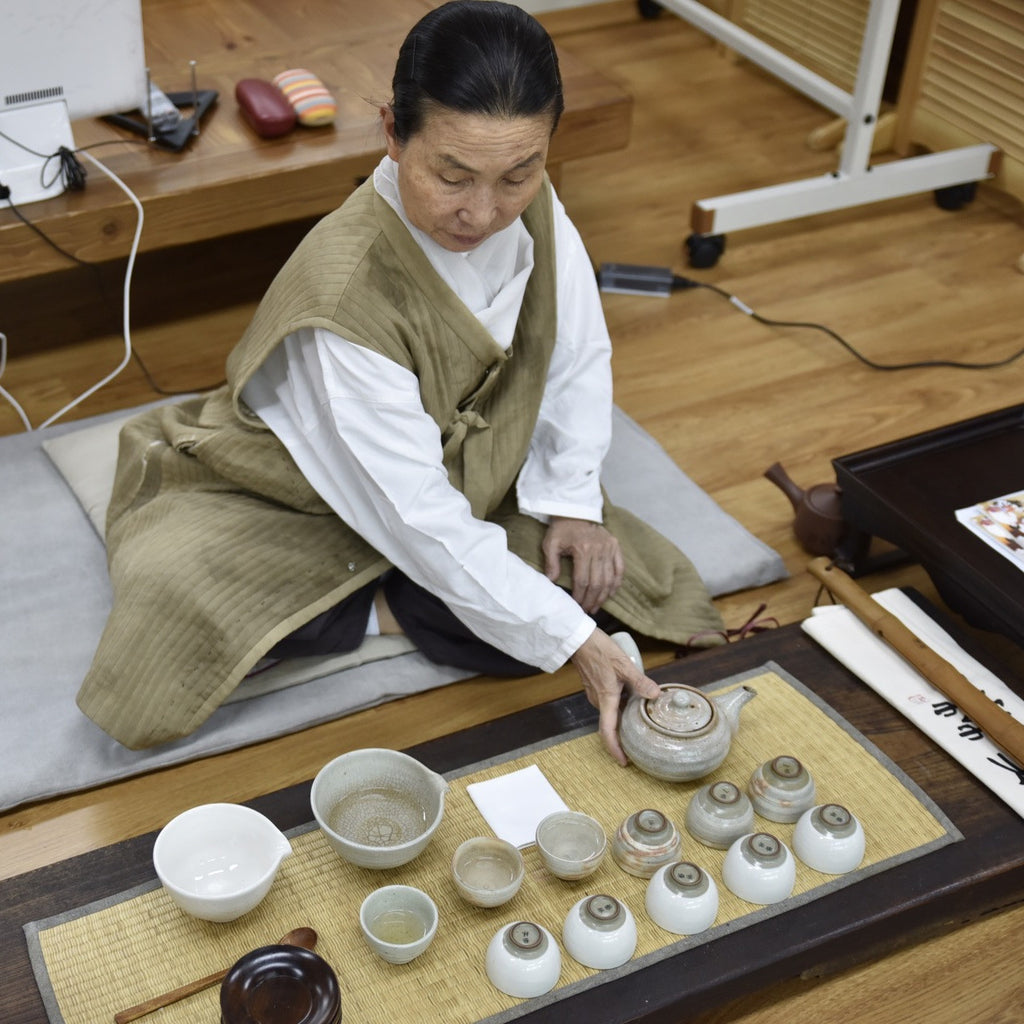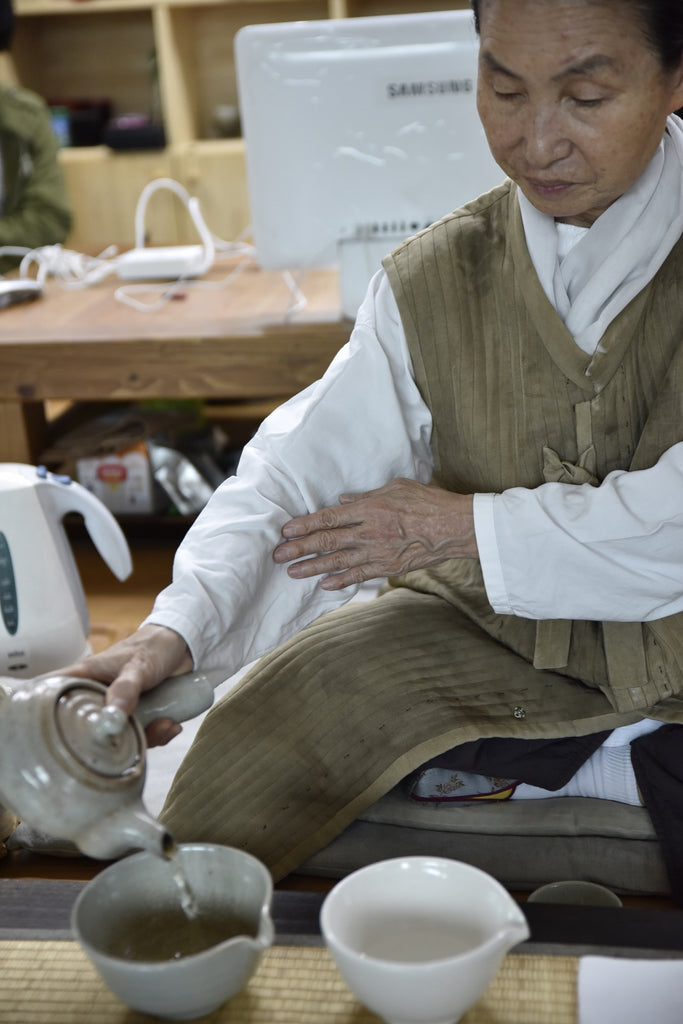A dialogue with Chae Won-Hwa, Korean Great Tea Master
Seoul, 17th April 2017
Most tea enthusiasts know chanoyu, the Japanise tea ceremony, and practice daily Gongfu Cha, the Chinese brewing technique. Just a few though are familiar with the Korean Way of Tea.
This year I started the Spring tea journey in Seoul, where I met Master Chae Won-Hwa. She is the highest living representative of the Korean tea culture.
After an uneasy search under the rain, I finally cross the door of the Panyaro Institute, where director Chae Won-Hwa teaches theory and practice of the Korean Way of Tea. It takes three years to finish her course; in the past 30 years about 150 students have assisted to her classes.
Ms. Chae, an elegant and friendly lady in her seventies, was waiting me cross-legged on the floor, in front of the little table adorned with traditional Korean teaware.

Master Chae Won-Hwa preparing tea according to the Korean Way of Tea.
Ms. Chae inherited the Panyaro approach to tea from her teacher, Mr. Hyodang. During the first half of the 20th century, when Korea was under Japanese rule, Korean cultural identity has been suppressed; tea tradition and drinking practice got almost forgotten. After independence was achieve in 1945, Hyodang—a buddhist monk and active nationalist—dedicated the rest of his life to the revival of the Korean tea culture.
Based on Buddhist Zen principles and free of formalisms, the Korean Way of Tea is best summarised by four Chinese characters: 茶道無門 "The way of tea knows no door."
Different from the formalisms of the Japanese tea ceremony and much closer to the practice of Gongfu Cha, the Korean Way of Tea is a simple and natural approach to tea that promotes essential values of life like moderation, firmness, flexibility and gratitude.
Ms. Chae prepares the tea that she produced it with her own hands. She learned the skills to craft the Panyaro green tea from the Venerable Hyodang. The production is complex and unusual to me. A combination of green, black and yellow tea productions. The fresh leaves, collected in a bamboo sieve, are immersed in boiling water, a practice unique to Panyaro tea. After a short withering, the leaves are rolled by hand to promote oxidation, similarly to black tea. Soon after the leaves are fired on a charcoal stove to stop oxidation, which actually barely occurred. The humid leaves are put in a pot for a month of ageing before being finally dried; most probably fermentation occurs in this time, similarly to yellow tea.
Ms. Chae's movements are natural, slow and elegant. The analogies with Gongfu Cha are clear. She uses a traditional side-handles teapot, a wide pitcher and small cups, which she cleans with hot water. The cups are carefully dried with a white little cloth before being placed in front of me and her son, onto a wooded saucer.
Just three teaspoons of tea in the pot, steeped in tepid water. She smiles and before sipping the tea joins the hands in a prayer of gratitude; the only explicit gesture that I connect with the Buddism origin of the Korean Way of Tea.
She never mention Zen or meditation, but her message can be clearly seen in her attitude towards tea. I enjoy her implicit teaching way much better than those of many self-made tea masters declaring their beliefs out loud.
Master Chae Won-Hwa travels to Mount Jirisan every Spring to produce Panyaro green tea. Her tea plantations is in the national park, up on the Buddhist mountain. I was lucky to meet her in Seoul; in a few days the new harvest starts; later here than in China, due to the colder weather.
Master Chae Won-Hwa explains the how she produces tea on Mount Jirisan.
We drink one cup after the other. She brews the tea shortly, for a light taste. But, from time to time, let the leaves steeping longer for a bitter taste with a jasmine aftertaste. Panyaro tea is reckon to contain six tastes: salt, sweet, sour, bitter, tart and peppery. I believe having experience them all today, in varying proportions. It's a new taste for my tasting buds that I instinctively associate with traditional Chinese yellow tea.

The calligraphy above us reads: 茶道無門 "The way of tea knows no door."
All Panyaro tea is produced completely by hand and solely by Master Chae Won-Hwa. Last year she was sick, so no tea was produced. I took with me a small can of the 2015 production that I will share with you on May 7, in the seminar "Picking, processing and tasting green tea".
Written by Gabriele







